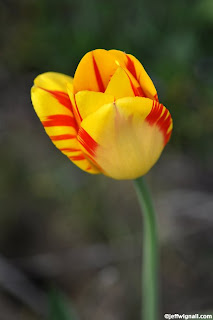 As long as we're on the subject of flowers and gardens (obviously a major subject with me), let me talk about flash for a minute. A lot of times I shoot either very early (usually when I've been up all night writing!) or very late in the day. I love the light in my front garden late in the day because that part of the yard gets the setting sun, so the light is soft and warm.
As long as we're on the subject of flowers and gardens (obviously a major subject with me), let me talk about flash for a minute. A lot of times I shoot either very early (usually when I've been up all night writing!) or very late in the day. I love the light in my front garden late in the day because that part of the yard gets the setting sun, so the light is soft and warm.The problem with shooting late in the day though is that the light is disappearing fast (as opposed to early morning when the light just keeps getting brighter) and so sooner rather than later you run out of good light. The light is often prettiest just before it disappears but because it's so dim I have to shoot wide open and often at very slow shutter speeds that I'd prefer not to use. Since I use a tripod most (not all) of the time, the slow speeds aren't a problem in terms of camera shake, but if there's the slightest breeze the flowers just wave back and forth continually--a real problem if you want sharp photos.
The solution for me is to turn on the built-in flash. The flash fires at such a brief duration that it's like using a much faster shutter speed--it freezes the motion and, if I am shooting handheld, usually eliminates any camera shake. In addition, because your camera will pump out more flash if you set smaller apertures, you can use a smaller f/stop to get a bit more depth of field (and usually you need all the DOF you can get in close-ups). Because most digital cameras are very good at balancing flash in daylight, you'll get suprisingly good results that don't look artificial at all. I used my Nikon D90 here (with a 105mm Micro Nikkor) and I had to look at the EXIF data to see if the flash had fired or not (it had).
So if you're out in the garden or in a park and the light starts to fade, try popping on the flash and keep shooting a while longer. I think you'll find the results are surprisingly nice.






No comments:
Post a Comment